
Love crispy, flaky sweet baked treats? Try this Otap recipe! These classic Filipino cookies take a bit of time to make but so worth the effort. They’re delicious fresh from the oven and great with coffee or tea.
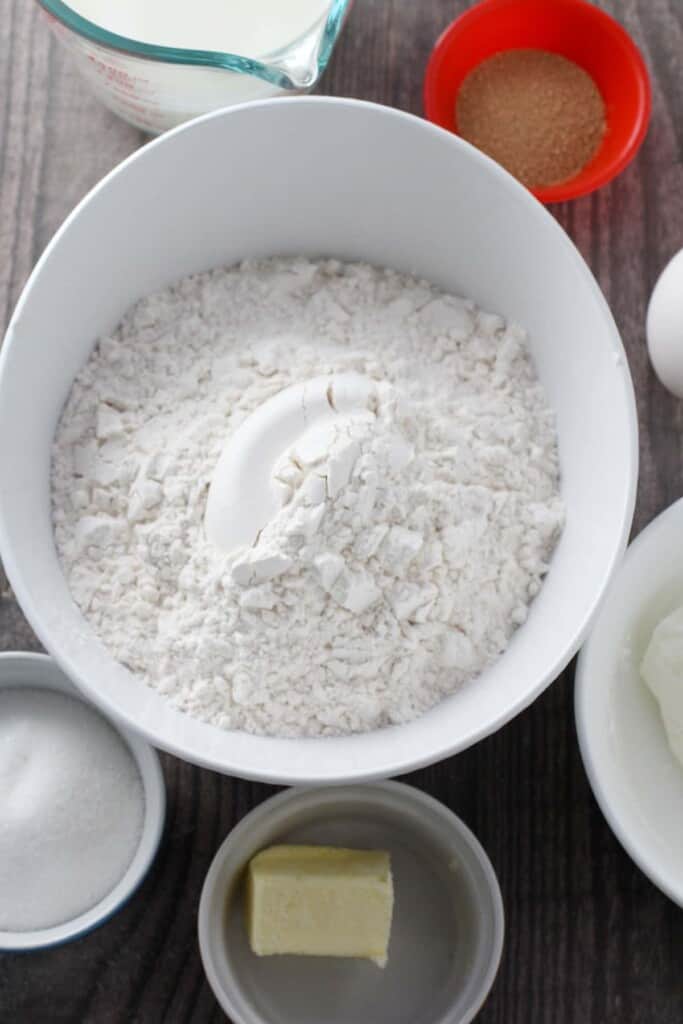
What is Otap
Otap or utap is a type of Filipino puff pastry cookie that originated from Cebu. It’s thin and oblong in shape, and have a brittle texture and a generous coating of sugar.
Making authentic otap involves an eleven-stage process which results in multiple crumbly layers. Our recipe here is a simplified version, but still creates an absolutely buttery, flaky piece of heaven!
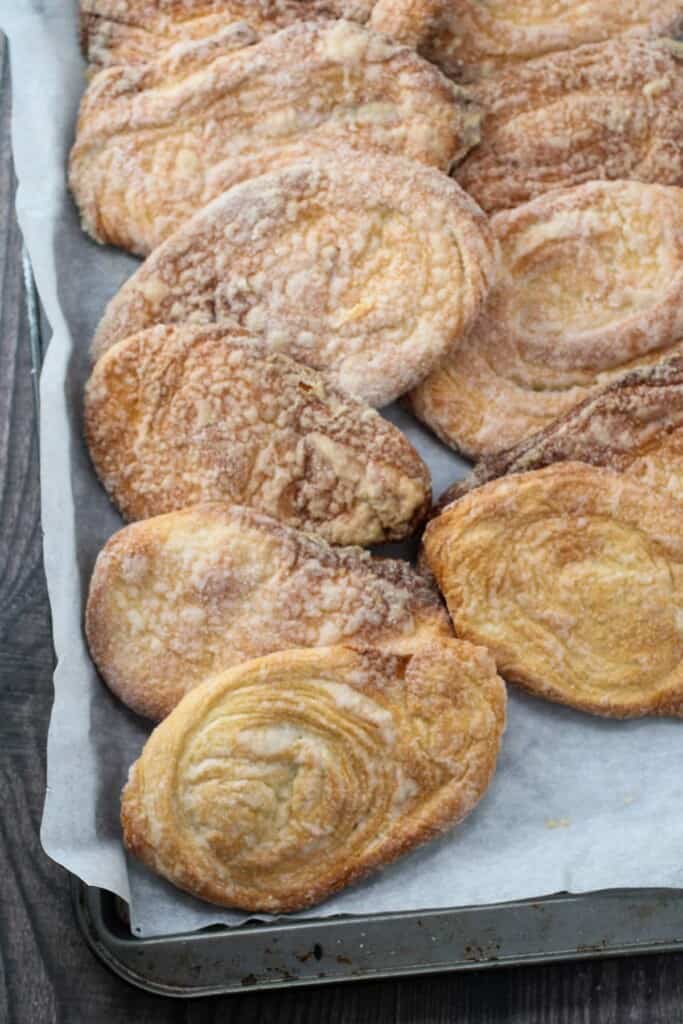
The characteristic texture of the cookie is achieved by a series of rolling and folding the dough. A second dough made of butter, shortening, and flour is spread within the main dough, adding flavor as well as layers.
Don’t let the long list of steps discourage you from trying this recipe! With a bit of arm work and patience, you will be rewarded with a delicious flaky biscuit that is hard to resist!
Check out the step-by-step photos, instructions, and baking tips below to help you through the process. You’ll also find the recipe card with complete ingredient list!
Step-by step instructions
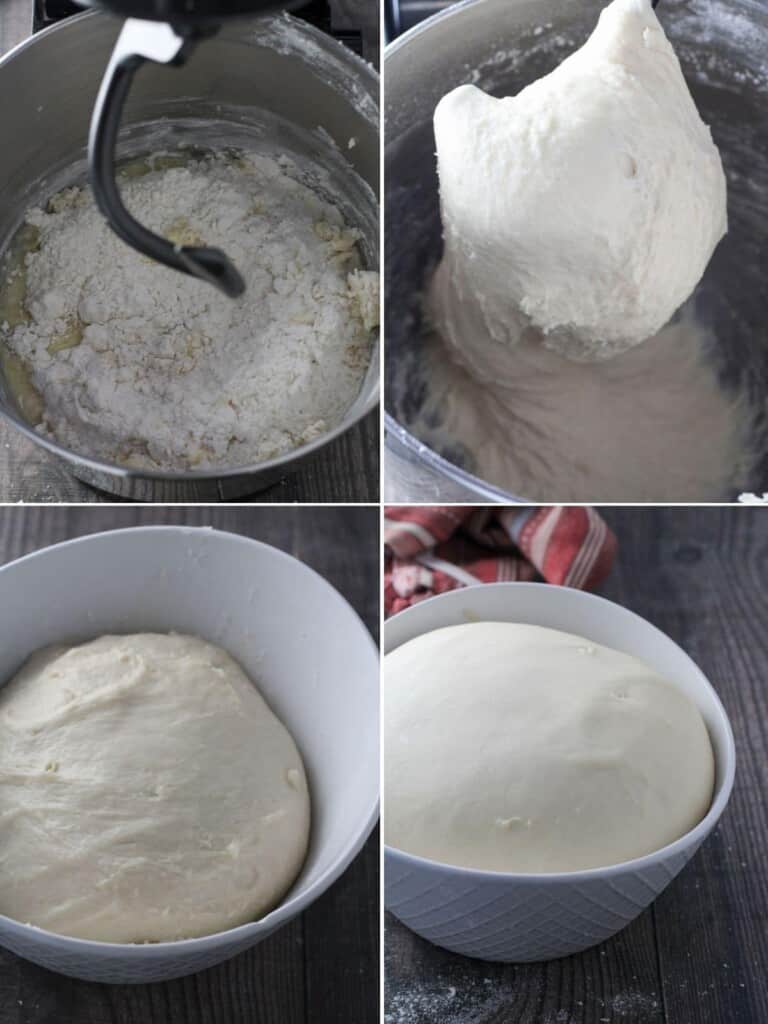
Making the first dough
- In the bowl of a stand mixer, add warm milk. Sprinkle the yeast and 1 teaspoon of the sugar. Let the mixture stand for about 5 to 10 minutes or until foamy.
- Add the remaining sugar, salt, egg, shortening, and the melted butter. Stir with a wooden spoon until incorporated.
- Add the flour, and using the dough hook, slowly beat the mixture on low until the flour is moistened.
- Turn the speed to medium-high and beat the dough for about 12 to 15 minutes, or until the dough gathers in the center and pulls away from the side of the bowl. If the dough is still very sticky after 10 minutes of kneading, sprinkle a little bit of flour to help with the stickiness.
- Place the dough in a bowl and cover with a clean kitchen towel. Allow to rise for about one hour, or until doubled in size.
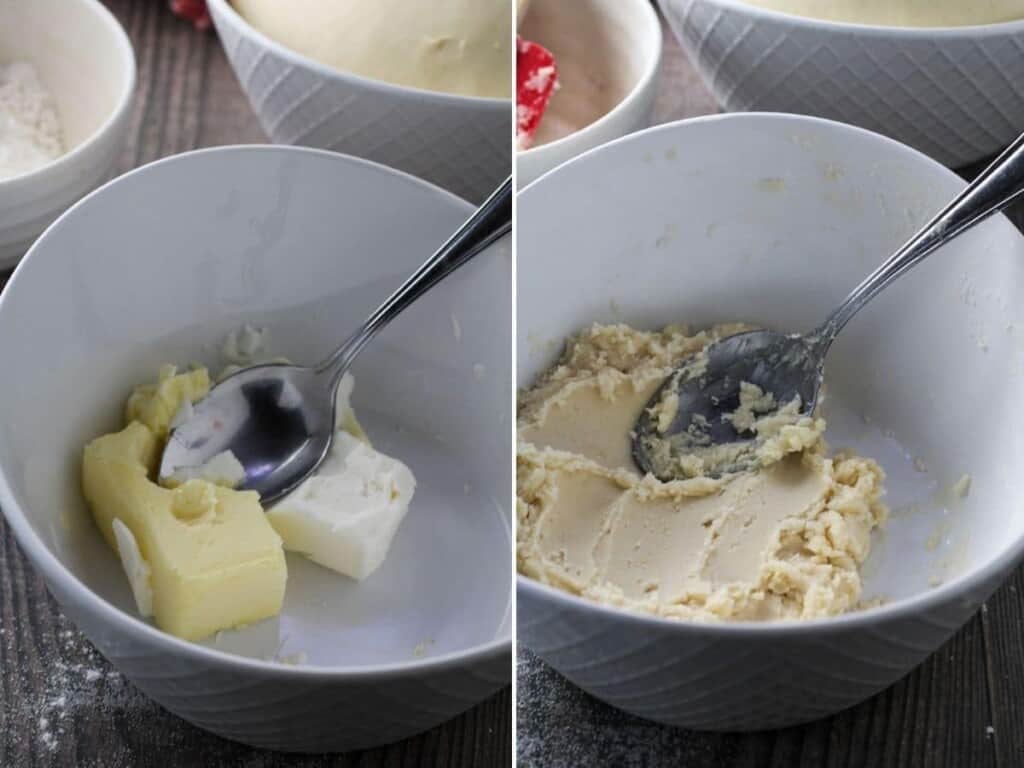
Making the second dough
- While the dough rises, make the second dough.
- Using the back of a spoon, combine the butter and shortening together until smooth and creamy.
- Gradually add the flour and keep mixing until the mixture is soft and smooth.
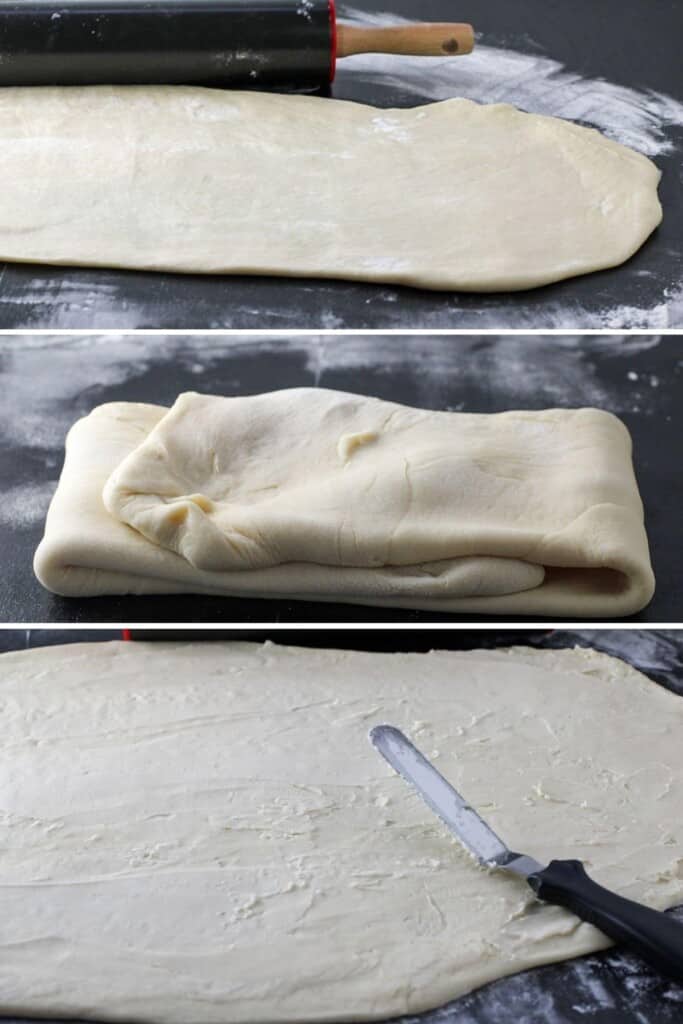
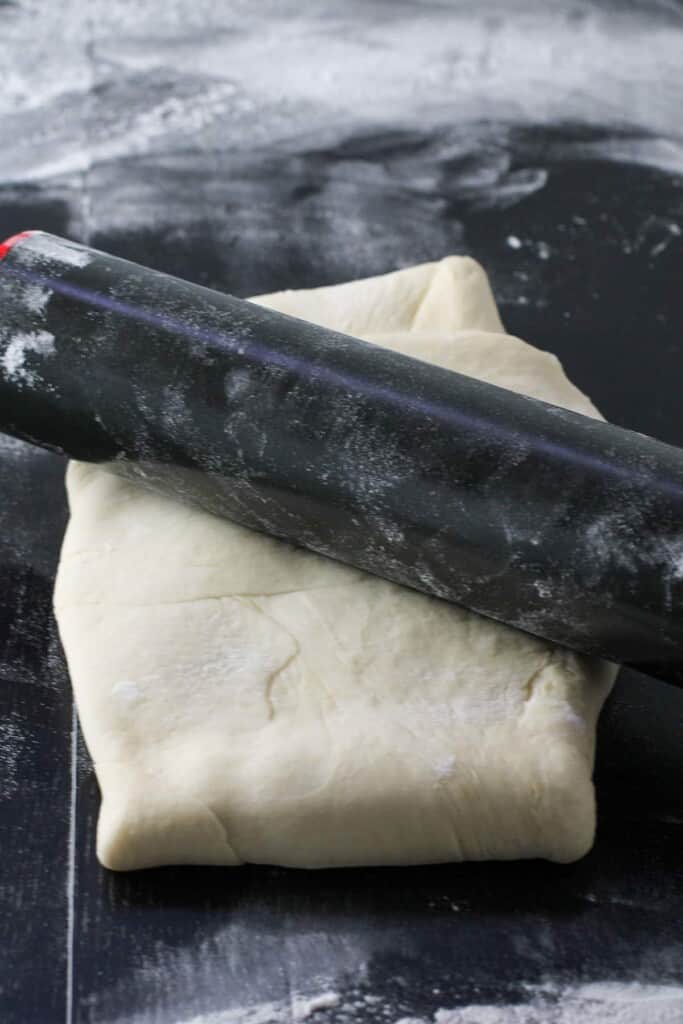
Assembling the dough
- Deflate the risen first dough and turn it over on a lightly floured surface.
Using a rolling pin, roll it into about a 1/4-inch rectangle, with the long edge of the rectangle facing you. - Fold the upper third of the dough towards the center, then fold the lower third over it. Fold both the left and right sides of the dough towards the center to form a rectangular “envelope” shape.
- Roll the dough into a 1/4 inch rectangle again. Spread the second dough over the rolled first dough using an angled spatula, making sure it is evenly distributed.
- Fold the dough again in the same way and roll it out into a rectangle as thin as possible without tearing apart.
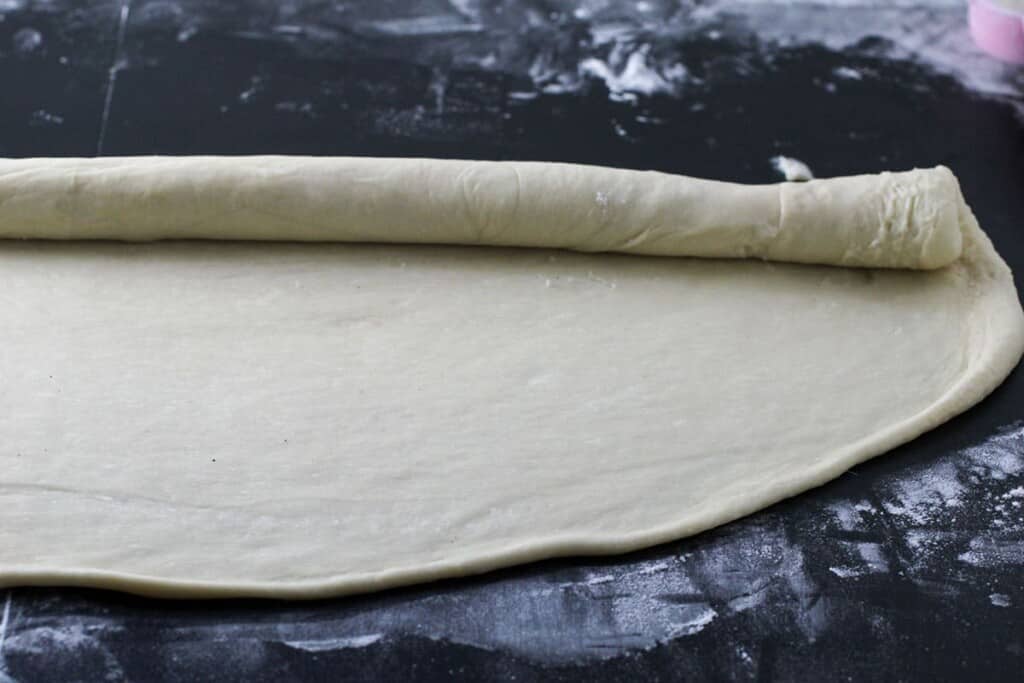
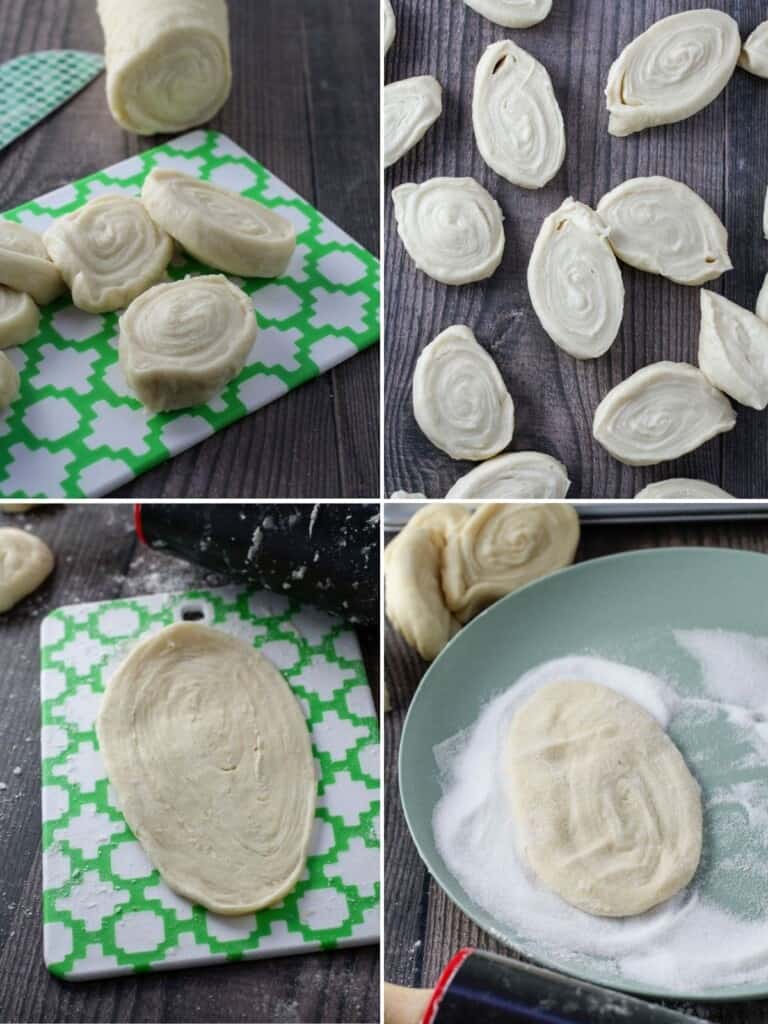
Preparing the dough for baking
- Preheat oven to 350 F
- Starting on the long edge, roll the dough into a tight log.
- Using a knife, slice the dough into 1/2-inch thick portions. Roll out each portion very thinly (paper-thin) into an oval shape. Lightly dust the rolling pin with flour to keep the dough from sticking.
- Dip the shaped dough in a plate of white sugar to fully coat. Repeat with remaining dough portions.
- Arrange in a single layer on a parchment-lined baking sheets and bake in the preheated oven for about 5 to 8 minutes, or until the top is golden and crisp.
- Allow to cool completely and remove from pan.
Baking tips
- To make the second dough, make sure the shortening and
butter are really, really soft. Leave out at room temperature for about 10 to 15 minutes or warm them up for 3 to 5 seconds in the microwave until softened but not melted. - Roll the individual dough portions into oval shapes very thinly (as in paper-thin) to achieve a crispy otap.
- Bake them in batches, and roll them flat just before they go to the oven so they remain thin. If they puff up before baking, give them one final pass with the rolling pin to flatten them out.
- When rolling the individual portions into oval shapes, lightly dust the rolling pin with flour to prevent the dough from sticking.
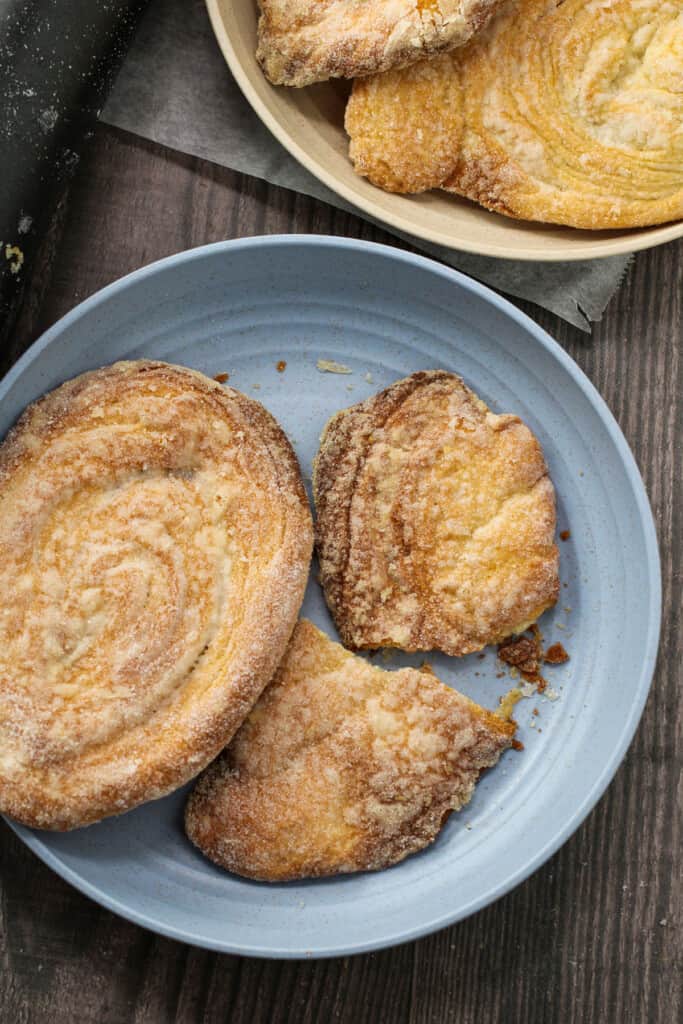
How to store
Transfer to an airtight container and store at room temperature. Otap cookies will keep fresh for up to three days, but may lose their crispiness as they sit longer.
Did you make this? Be sure to leave a review below and tag me @kawalingpinoy on Facebook and Instagram!
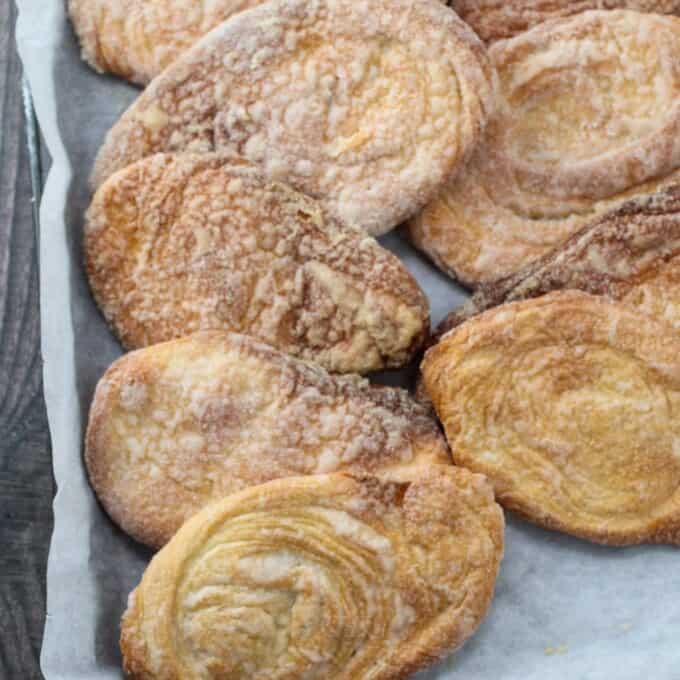
Otap
Otap are buttery, flaky baked goodies you’ll love with your coffee or tea. These Filipino-style puff pastry cookies make a great hostess or holiday gifts as well as everyday sweet treats.
Course: Baked Goods
servings
Ingredients
For the First Dough
- 1 cup warm milk (105-115 F)
- 2 1/4 teaspoons active dry yeast
- 1/2 cup sugar
- 1/2 teaspoon salt
- 1 egg
- 1/4 cup vegetable shortening, very soft
- 2 tablespoons butter, melted
- 3 cups all-purpose flour (plus up 1/4 cup for rolling)
- sugar for rolling
For the Second Dough
- 1/4 cup butter, softened
- 1/4 cup vegetable shortening, softened
- 3/4 cup flour
Instructions
- In the bowl of a stand mixer, pour the warm milk. Sprinkle the yeast and about 1 teaspoon of the sugar. Let the mixture stand for about 5 to 10 minutes, or until foamy.
- Add the remaining sugar, salt, egg, shortening, and the melted butter. Stir with a wooden spoon until incorporated.
- Add the flour, and using the dough hook, slowly beat the mixture on low until the flour is moistened.
- Turn the speed to medium-high and beat the dough for 12 to 15 minutes, or until the dough gathers in the center and pulls from the side of the bowl.
- If the dough is still very sticky after 10 minutes of kneading, sprinkle a little bit of flour to help with the stickiness.
- Place the dough in a bowl and cover with a clean kitchen towel. Let it rise for 1 hour, or until doubled in size.
- Meanwhile, make the second dough. Mix the softened butter and shortening together using the back of the spoon until creamy and smooth. Gradually stir in the flour and keep mixing until a smooth and soft dough forms.
- Deflate the risen first dough and turn it over on a lightly floured surface. Using a rolling pin, roll into a rectangle about 1/4-inch thick, with the long edge facing you.
- Fold the upper third of the dough towards the center, then fold the lower third over to the center. Fold both the left and right sides of the dough towards the center to form a rectangular “envelope” shape.
- Roll the dough into a rectangle again, about 1/4 inch-thick. Using an angled spatula, spread the second dough over the rolled first dough until well-distributed.
- Fold the dough again in the same way. Roll it out again into a rectangle as thin as possible without tearing.
- Starting on the long edge, roll the dough into a tight log.
- Preheat oven to 350 F.
- Use a knife to slice the dough into 1/2-inch portions. Take one portion, and roll it out very thinly (paper-thin) into an oval shape. Lightly dust the rolling pin to keep the dough from sticking.
- Carefully dip the shaped dough on a plate of white sugar to coat. Repeat with remaining dough portions.
- Arrange the otap dough in a single layer on parchment-lined baking sheets and bake in the preheated 350 F oven for about 15 to 18 minutes, or until the top is golden and crisp.
- Allow the otap to cool completely and remove from pan.
Notes
- To make the second dough, make sure the shortening and
butter are really, really soft. Leave out at room temperature for about 10 to 15 minutes or warm them up for 3 to 5 seconds in the microwave until softened but not melted. - Roll the individual dough portions into oval shapes very thinly (as in paper-thin) to achieve a crispy otap.
- Bake them in batches, and roll them flat just before they go to the oven so they remain thin. If they puff up before baking, give them one final pass with the rolling pin to flatten them out.
- When rolling the individual portions into oval shapes, lightly dust the rolling pin with flour to prevent the dough from sticking.
Nutrition Information
Calories: 145kcal, Carbohydrates: 20g, Protein: 2g, Fat: 6g, Saturated Fat: 3g, Polyunsaturated Fat: 1g, Monounsaturated Fat: 2g, Trans Fat: 1g, Cholesterol: 12mg, Sodium: 65mg, Potassium: 36mg, Fiber: 1g, Sugar: 10g, Vitamin A: 92IU, Vitamin C: 1mg, Calcium: 13mg, Iron: 1mg
“This website provides approximate nutrition information for convenience and as a courtesy only. Nutrition data is gathered primarily from the USDA Food Composition Database, whenever available, or otherwise other online calculators.”


